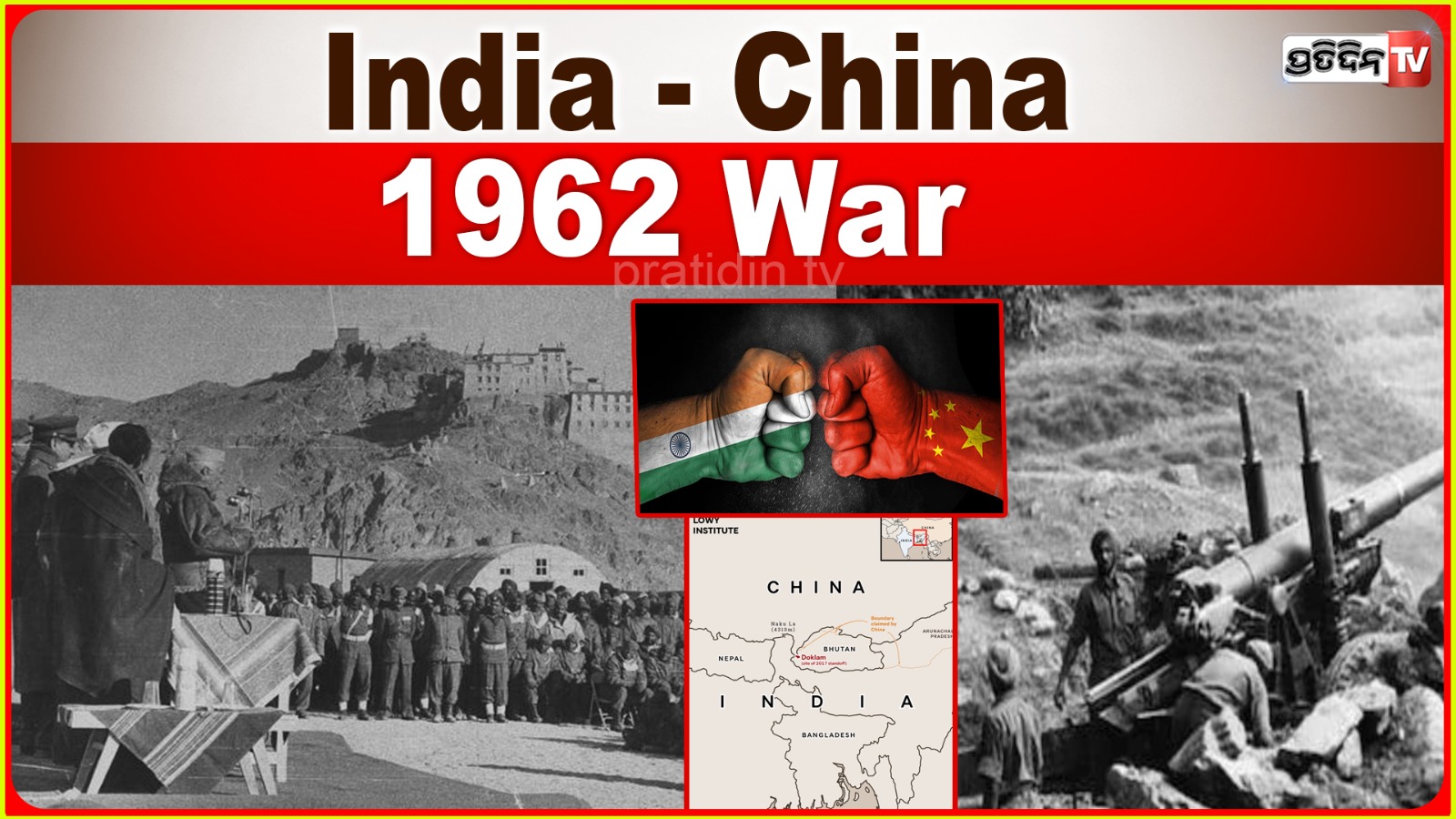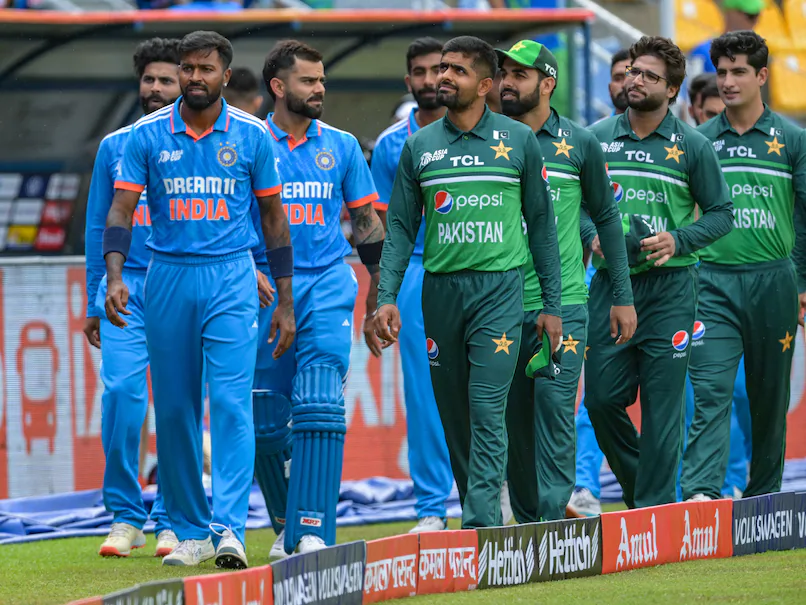What is the reason for the war between India and China?
India-China War of 1962: How It Started: 21st November is important in the history of India because on this day, China declared a ceasefire with India. On 20th October, 1962, China attacked India. This war was known as the Indo-China War of 1962. India never suspected that China could attack. Because of this, the Indian Army did not prepare properly. Well, India got a big lesson from this war, which later proved useful for India. Learning a lesson from this war, India worked on the modernization of the army, and the rest of the result is in front of everyone today. Anyway, let us know the whole story of this war today.
Friendly relations with China:
India gained independence in 1947, and the People’s Republic of China (PRC) was formed in 1949. In the early days, the policy of the Indian government was to have friendly relations with China. When China announced its occupation of Tibet, India sent a protest letter demanding a discussion on the matter. How serious India was about its relations with China has been proved on many occasions. India did not participate in a conference for a peace agreement with Japan just because China was not invited to it. Even when China was isolated in the world, India stood with China. In 1954, an agreement was reached between India and China on five principles for peaceful coexistence, which is called the Panchsheel Agreement. Under that agreement, India accepted Chinese rule in Tibet. At the same time, former Prime Minister of India Jawaharlal Nehru gave the slogan ‘Hindi-Chini Bhai-Bhai’.
War started From here:
In March 1959, when the Dalai Lama came to India to take refuge and he was given a warm welcome here. Then Mao Zedong accused India of instigating the Lhasa rebellion in Tibet. After this, tension started to develop in the relations between the two countries. China started seeing India as a threat to its rule over Tibet, which became a major reason for the Indo-China war. From 1959 to 1962, sporadic conflicts started between India and China. Around 10 July 1962, around 350 Chinese soldiers surrounded an Indian post at Chushul. The Chinese soldiers, on loudspeaker, advised the Gorkha soldiers that they should not go into battle for India.
The Ind-China War Begins:
On October 20, 1962, the PLA of China attacked Ladakh and crossed the McMahon Line in the NEFA region. Till the start of the war, India was confident that the war would not start, due to which no preparations were made from India’s side. Thinking this, India deployed only two divisions of soldiers in the war zone while China had three regiments deployed there. Chinese soldiers also cut India’s telephone lines. This made it difficult for Indian soldiers to contact their headquarters.
On the first day, the Chinese infantry attacked from the rear as well. Due to the continuous losses, the Indian soldiers had to leave Bhutan. On October 22, the Chinese soldiers set fire to a bush, which created a lot of confusion among the Indian soldiers. Meanwhile, about 400 Chinese soldiers attacked the Indian army’s base. The initial attacks of China were countered by firing mortars from India. When the Indian soldiers came to know that the Chinese soldiers had gathered in a pass, they started firing with mortars and machine guns. About 200 Chinese soldiers were killed in this attack. The Indian army was not fully prepared, due to which the Chinese army rapidly entered Indian areas. By October 24, Chinese soldiers had come 15 kilometers inside the Indian territory.
China’s first offer of a ceasefire:
China’s first prime minister Zhou Enlai wrote a letter to Nehru proposing a ceasefire. Inlai proposed that India and India should end the war. He also suggested that both sides withdraw their armies 20 kilometers inside the Line of Actual Control. Inlai proposed that China would withdraw from Arunachal Pradesh (then NEFA-North East Frontier Agency) and India and China should maintain the status quo on Aksai Chin. Inlai wrote another letter to Nehru and made the same proposal. But Nehru rejected China’s proposal and said that China’s claim on Aksai Chin is illegal. Meanwhile, the Soviet Union also changed its stance and supported China and said that the McMahon Line is a dangerous result of British imperialism.
War and ceasefire again:
Parliament passed a resolution to ‘drive out the invaders from the sacred soil of India’. War broke out again between the two countries on 14 November. A week later, China declared a unilateral ceasefire. But China occupied Aksai Chin and withdrew from the Northeast region.
India’s Relations With China from 1950 to 1962:
- April 1, 1950: K.M. Panikkar was appointed the first Ambassador of India to China
- November 1950: A UN resolution declared Beijing an aggressor in the Korean War; India protested.
- December 6, 1950: Nehru advocates China’s membership in the UN
- May 1951: Tibet comes under full Chinese control
- May 15, 1954: Panchsheel Agreement signed between India and China on peaceful coexistence
- June 1954: China’s first Prime Minister Zhou Enlai visits India
- February 1955: India formally accepts China’s claim on Taiwan
- March 2, 1955: India objects to China’s official map showing a part of its Northeast
- November 1956: Joe Enlai visited India for the second time
- September 4, 1958: India objects to the inclusion of Northern Assam and NEFA in the China Pictorial
- January 23, 1959: Joe Enlai formally claimed 40,000 sq km of NEFA and Ladakh within India
- March-April-1959: Dalai Lama escapes from Lhasa. India’s decision to grant asylum to the Dalai Lama sours relations
- August 25, 1959: Chinese troops attack an Indian post in Ladakh
- September 8, 1959: China refuses to accept the McMahon Line
- October 20, 1959: Chinese troops attack Indian troops patrolling in Aksai Chin. 9 Indian soldiers killed and 10 captured.
- November 7, 1959: Joe Enlai proposes a 20-km withdrawal on both sides of the McMahon Line
- April 19, 1960: Meeting between Nehru and Joe Enlai ends in deadlock
- April 25, 1960: China rejects India’s documentary evidence on disputed territory
- June 3, 1960: Chinese troops violate Indian border in NEFA
- October 31, 1961: China shows aggression in border patrolling, sends troops to India
- November-December 1961: Nehru adopts a proactive attack policy to push back Chinese troops
- April 1962: China issues ultimatum, demands withdrawal of Indian troops from forward posts
- June 10, 1962: Indian and Chinese troops face off in Ladakh, armed conflict averted
- September 13, 1962: China again proposes both sides of the border to withdraw 20 km each
- September 20, 1962: Chinese troops cross McMahon Line in NEFA, attack Indian posts
- September 29, 1962: Chinese troops launch second massive attack in NEFA
- October 20, 1962: China launches massive attack on the border from NEFA to Ladakh
- October 24, 1962: Three-point ceasefire proposal from China
- October 26, 1962: India declared national emergency
- October 27, 1962: Nehru rejected the ceasefire proposal
- November 15, 1962: China launched a massive attack on the eastern border and western region
- November 18, 1962: China captured Bomdila in NEFA
- November 21, 1962: China announced a unilateral ceasefire and asked its troops to withdraw 20 kilometers behind the Line of Actual Control
- December 8, 1962: The Chinese Prime Minister again sent a three-point proposal which was accepted by India
- December 10, 1962: Both countries accepted the Colombo proposal.
ALSO READ: India-Pakistan War History (1947-2025)





